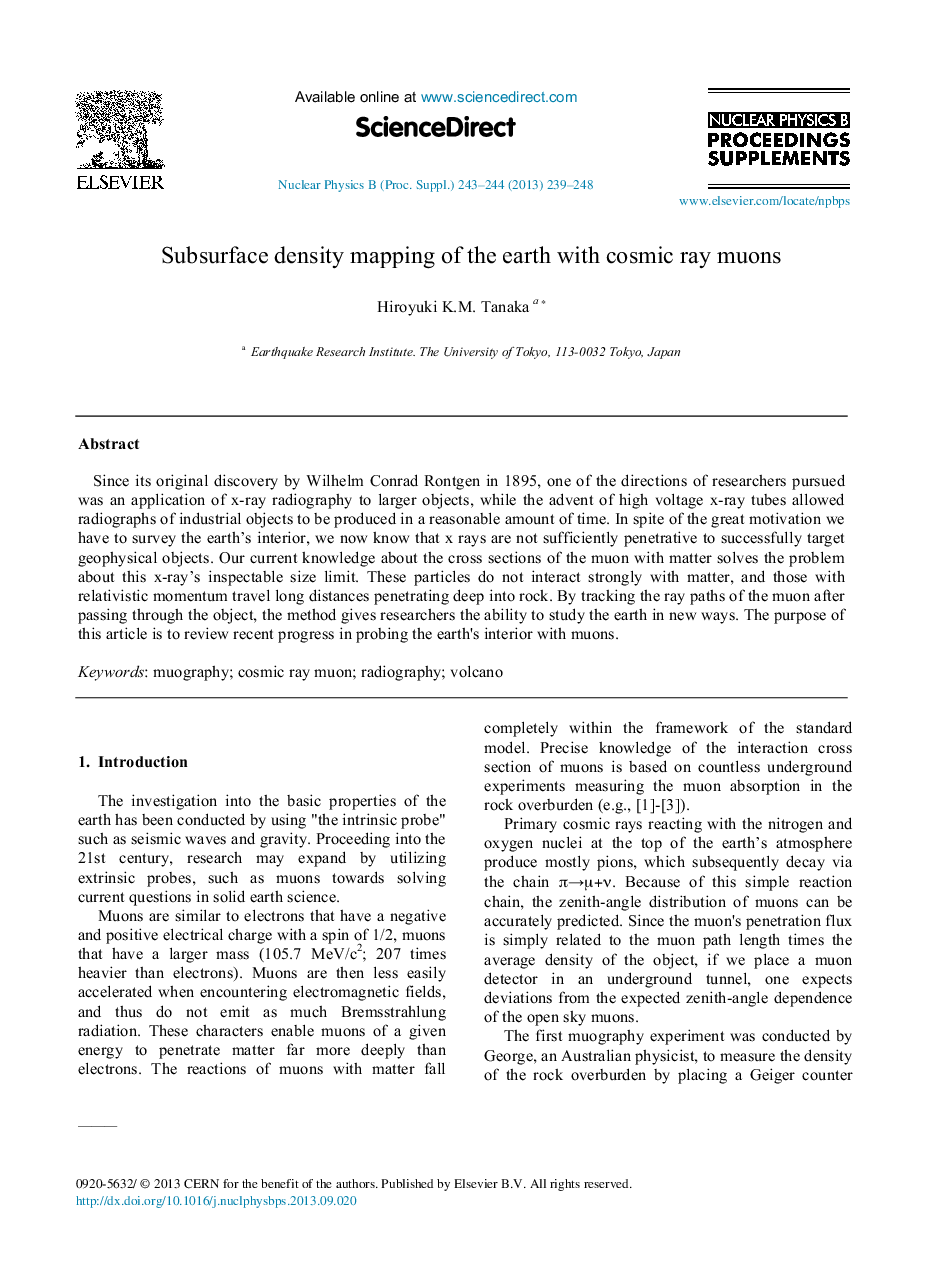| Article ID | Journal | Published Year | Pages | File Type |
|---|---|---|---|---|
| 1847322 | Nuclear Physics B - Proceedings Supplements | 2013 | 10 Pages |
Since its original discovery by Wilhelm Conrad Rontgen in 1895, one of the directions of researchers pursued was an application of x-ray radiography to larger objects, while the advent of high voltage x-ray tubes allowed radiographs of industrial objects to be produced in a reasonable amount of time. In spite of the great motivation we have to survey the earthʼs interior, we now know that x rays are not sufficiently penetrative to successfully target geophysical objects. Our current knowledge about the cross sections of the muon with matter solves the problem about this x-rayʼs inspectable size limit. These particles do not interact strongly with matter, and those with relativistic momentum travel long distances penetrating deep into rock. By tracking the ray paths of the muon after passing through the object, the method gives researchers the ability to study the earth in new ways. The purpose of this article is to review recent progress in probing the earthʼs interior with muons.
